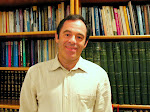 The Sages composed a metaphor to describe the reproductive organs in the body of a woman. They spoke of the room (the womb), the corridor (the vaginal canal), and the attic (the upper cavity). There are two ways to explain “the upper cavity.” Some say that in ancient times, when there were no drugs or antibiotics, there could often be a “passageway” between the vaginal canal and such body parts as urethra. Others simply take “the upper cavity” to indicate any uncommon source of blood, such as a wound.
The Sages composed a metaphor to describe the reproductive organs in the body of a woman. They spoke of the room (the womb), the corridor (the vaginal canal), and the attic (the upper cavity). There are two ways to explain “the upper cavity.” Some say that in ancient times, when there were no drugs or antibiotics, there could often be a “passageway” between the vaginal canal and such body parts as urethra. Others simply take “the upper cavity” to indicate any uncommon source of blood, such as a wound.
Blood that originates in the “room” is ritually impure, and blood that originates in the “attic” is pure. If blood was found in the “corridor,” it could have come either from the room or from the attic. However, since the room discharges blood frequently, and the attic only infrequently, the blood in the corridor is presumed to have come from the room, and is declared as definitely impure.
The practical consequence of this rule is that if the woman touched ritually pure foods, such as the Kohen's portion, or “terumah,” the food is declared definitely impure, and is burned because of that. Should it be only a doubt, the food would not be burned, but would not be eaten either, but the rule resolves this uncertainty.
Rabbi Yochanan said that there are three places in this Tractate where the rule of majority was used to resolve uncertainty, and ours is one of them. The Talmud then investigates what the other ones are, and why yet additional ones were not included.
Art: Peter Vilhelm Ilsted - Woman reading

No comments:
Post a Comment